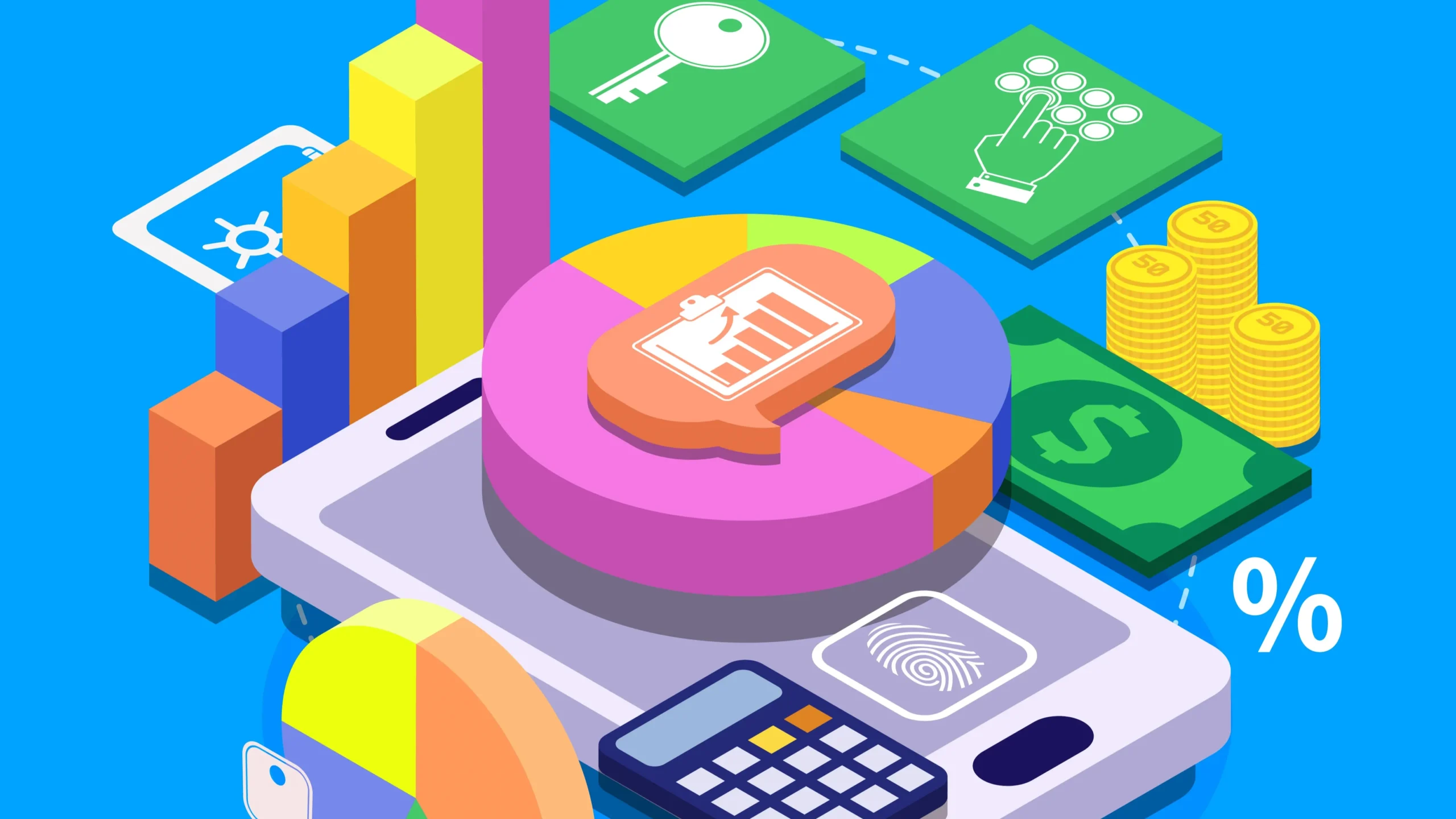Now a days, there is huge competition in retail business, hence understanding and using data analytics is very important for business success. Big data analytics techniques offers retail businesses the tools they need to optimize operations, enhance customer experiences and push sales further.
In this guide, we shall explore the big data analytics techniques for retail businesses, including inventory optimization, personalized marketing, customer segmentation and demand forecasting. We shall also highlight real world examples, discuss the role of predictive analytics and the importance of data privacy in retail.
What are Big Data Analytics Techniques for Retail Business?
Big data analytics techniques in retail business refers to the process of examining large and diverse datasets to uncover patterns, trends and correlations. By analyzing these datasets, retailers can make data driven decisions that improve their business results. Big data analytics helps retail businesses in areas like customer experience, supply chain management, to make pricing strategies and check marketing effectiveness.
Key Benefits of Big Data Analytics Techniques in Retail
1. Improved Customer Experience:
By analyzing customer data, retailers can personalize shopping experiences, which leads to higher satisfaction and loyalty.
2. Enhanced Operational Efficiency:
Inventory optimization and demand forecasting help reduce waste and improve supply chain efficiency.
3. Higher Sales and Profit Margins:
Targeted marketing and demand forecasting result in better product availability and relevant offers, which boosts sales.
4. Better Decision Making:
Analytics provides actionable tips that enable retailers to make informed decisions about marketing, inventory and customer engagement.
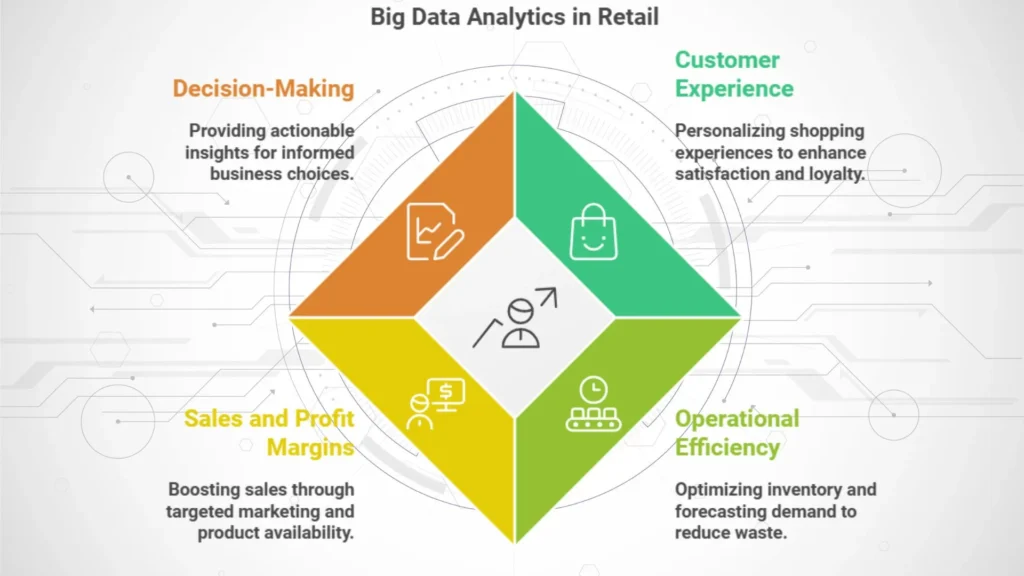
Key Big Data Analytics Techniques for Retail
Here are some of the essential analytics techniques that retailers use to extract value from big data:
1. Inventory Optimization
Efficient inventory management is essential for success in retail business. Big data analytics helps retailers optimize their inventory by analyzing sales trends, customer demand and seasonal patterns. With real time information, businesses can reduce overstock and stock-outs, which ensures they have the right products available when customers need them.
Example: Walmart uses big data to track product demand and adjust inventory levels accordingly. By analyzing historical sales data and current trends, Walmart ensures each store stocks the right items, which prevents costly overstock or stock shortages.
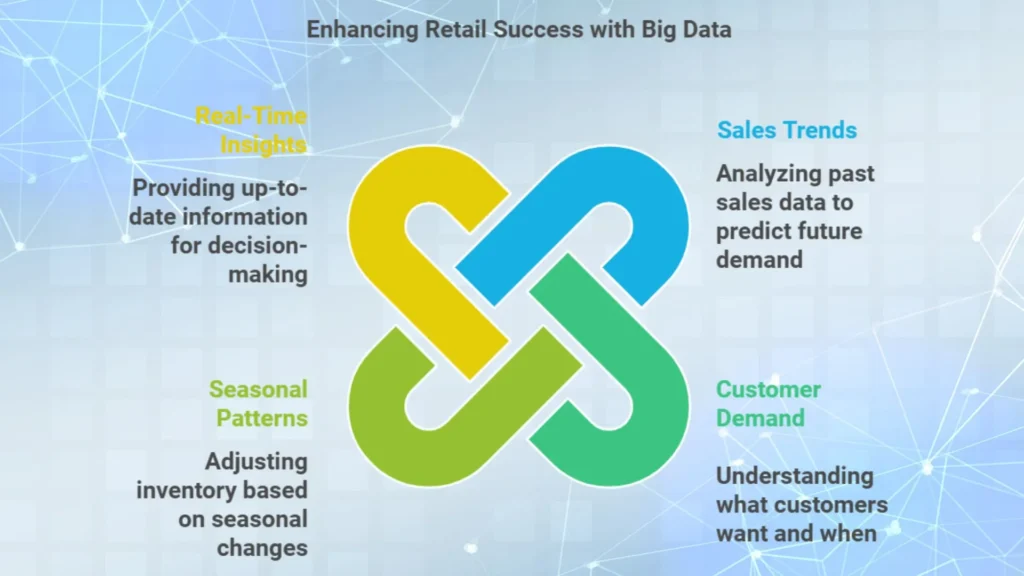
2. Personalized Marketing
Personalized marketing uses customer data to match their marketing messages to individual preferences and behaviors. Retailers can use big data analytics to segment customers based on demographics, purchase history and online behavior, which allows them for highly targeted promotions.
Example: Starbucks uses data from its loyalty program to send personalized offers to customers. For instance, if a customer frequently buys a specific type of coffee, Starbucks might offer a discount on that product. This approach increases customer engagement and encourages repeat purchases.
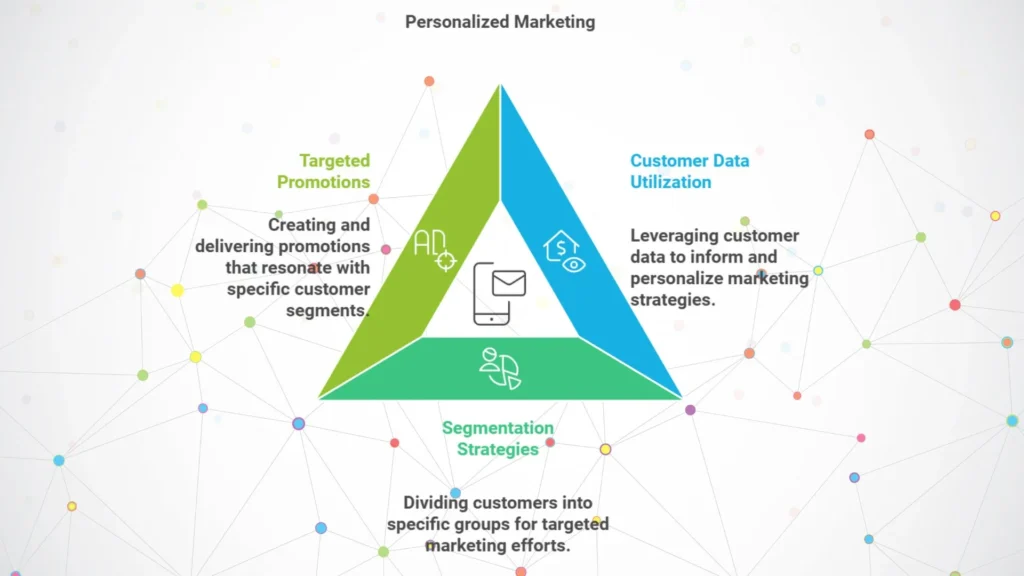
3. Customer Segmentation
Customer segmentation involves grouping customers based on shared characteristics, such as age, location or buying behavior. Big data analytics techniques help retailers to identify these segments, which allows them for more precise marketing efforts and product recommendations.
Example: Amazon uses customer segmentation to recommend products based on a user’s browsing and purchase history. This improves the customer’s shopping experience as well as increases the likelihood of cross selling and upselling.
4. Predictive Analytics for Demand Forecasting
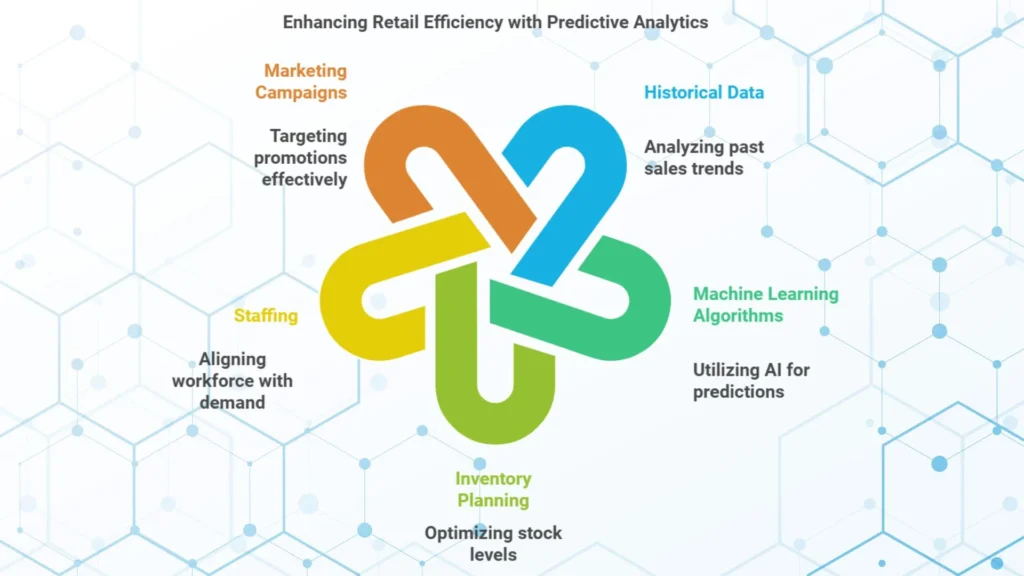
Predictive analytics uses historical data and machine learning algorithms to forecast future demand. This technique helps retailers to plan their inventory, staffing and run the marketing campaigns more effectively, which reduces the risk of stock-outs and missed sales.
Example: Zara, the fast fashion retailer, uses predictive analytics to analyze past sales data and predict demand for upcoming collections. This enables Zara to produce and stock the right amount of each item, which minimizes waste and ensures popular items are always available.
5. Pricing Optimization
Pricing optimization analyzes market trends, competitor prices and customer demand to recommend optimal pricing. With dynamic pricing, retailers can adjust prices based on factors such as demand and competitor actions, which maximizes profitability without losing customers.
Example: Airlines and e-commerce platforms often use dynamic pricing to adjust ticket prices based on demand. Similarly, retailers like Amazon update their product prices in real time to remain competitive and maximize sales.
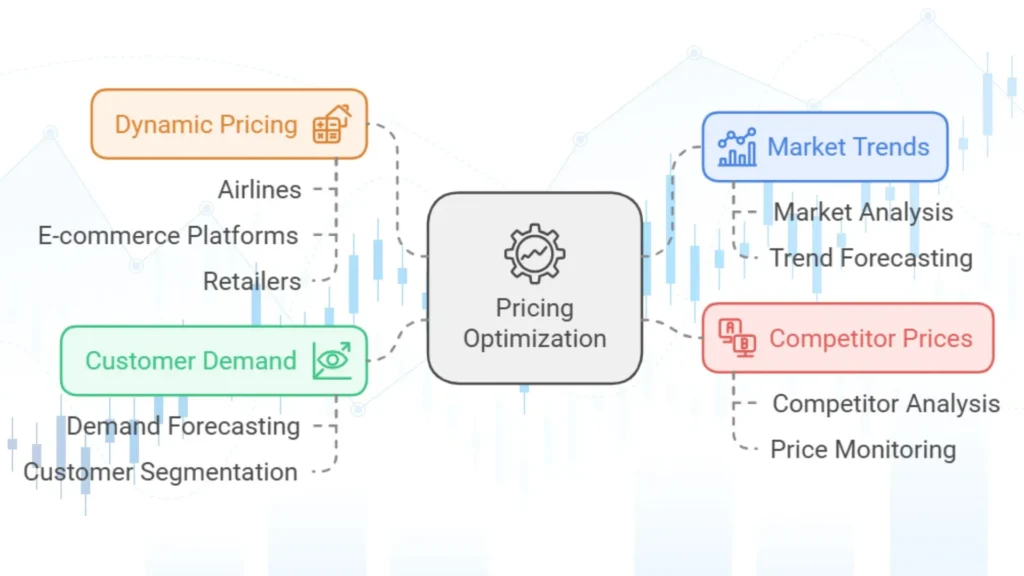
Real World Applications of Big Data Analytics in Retail
Case Study 1: Zara’s Predictive Analytics for Customer information
Zara, the global fashion retailer, uses big data to optimize its supply chain. By analyzing customer preferences and monitoring inventory in real time, Zara can respond quickly to trends and maintain optimal stock levels in stores.
Case Study 2: Kroger’s Customer Loyalty Program
Kroger, one of the largest grocery chains in the U.S., uses its customer loyalty program to gather data on shopping habits. By analyzing purchase patterns, Kroger offers targeted discounts to customers based on their preferences, which boosts customer retention and encourage repeat visits.
The Importance of Data Privacy and Security in Retail
While big data analytics offers immense benefits, it also raises privacy concerns. Retailers collect large amounts of personal information, which makes them responsible for protecting customer data from misuse and breaches. Data privacy laws like GDPR in Europe and CCPA in California enforce strict guidelines to protect consumer rights.
Tips for Ensuring Data Privacy and Security
1. Use Data Encryption:
Encrypt sensitive data to protect it from unauthorized access.
2. Implement Access Controls:
Limit access to customer data to only authorized personnel.
3. Stay Compliant:
Follow regulations like GDPR and CCPA to ensure customer data rights are respected.
4. Educate Customers:
Be transparent with customers about data usage and their rights regarding personal information.
Getting Started with Big Data Analytics in Retail
For retailers who want to implement big data analytics, here are some steps to get started:
1. Set Clear Objectives:
Define what you want to achieve, whether to improve inventory management, personalize marketing, or predict demand.
2. Collect Quality Data:
Gather data from multiple sources, including sales transactions, customer feedback and online behavior.
3. Choose the Right Tools:
Use analytics tools like Google Analytics, Tableau and IBM Watson to process and analyze your data.
4. Ensure Data Privacy Compliance:
Follow data protection laws to secure customer trust and avoid legal issues.
5. Continuously Monitor and Refine:
Regularly review your data analytics strategy to adapt to changing market trends and customer needs.
Conclusion
Big data analytics techniques are transforming the retail industry, which helps businesses to optimize their operations and better understand their customers. By using techniques like inventory optimization, personalized marketing, customer segmentation and demand forecasting, retailers can make smarter decisions and provide exceptional customer experiences.
As technology advances, data analytics will continue to evolve, which offers even more sophisticated tools for retail businesses. Those who invest in big data analytics tools, will remain most competitive and able to push sales further, boosts customer loyalty and maximizes profitability.

